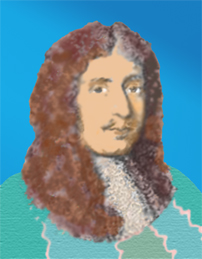Louis Joseph, Duke of Vendôme
From the Quicksilver Metaweb.
intermediate page for Louis Joseph
Stephensonia
Eliza's kidnapper, Louis Joseph, Duke of Vendôme ties into what Ben Franklin was warning Enoch Root about talking about the Asiento the slave trade. page 8
Authored entries
- Stephenson:Neal:Quicksilver:8:Barker (Neal Stephenson)
- Stephenson:Neal:Quicksilver:8:King Carlos the Sufferer(Alan Sinder)
- Stephenson:Neal:Quicksilver:18:...heard by their future Queen... (Chris Swingley)
- Stephenson:Neal:Quicksilver:576:rotten fish (Neal Stephenson)
- Treaties terminating wars
Louis Joseph, 2nd Duke of Vendôme
Louis Joseph, Duke of Vendôme (1654-1712), Marshal General of France, was the son of Louis, 2nd duke of Vendôme, and the great-grandson of Henry IV. and Gabrielle d'Estrees. Entering the army at the age of eighteen he soon distinguished himself by his vigour and personal courage in the Dutch wars,1 and by 1688 he had risen to the rank of lieutenant-general. In the war of the Grand Alliance he rendered conspicuous service under Luxemburg at Steinkirk and under Catinat at Marsaglia, and in 1695 he was placed in command of the army operating in Catalonia where he took Barcelona. Soon afterwards he received the marshalate.
A Mysterious Personage
In 1702, after the first unsuccessful campaign of Catinat and Villeroi, he was placed in command of the Franco-Spanish army in Italy. Louis Joseph, 2nd Duke of Vendôme, commander of French forces in Italy during the War of the Spanish Succession, who liked Gabriel Alberoni (later Cardinal Albani) and took him to France as a secretary in 1706 and to Spain in 1711. This link talks about the war.
The town: Vendôme
Vendôme, is a town of north-central France, capital of an arrondissement in the département of Loir-et-Cher. It is 22 miles northwest of the city of Blois by rail, lies on the Loire River, which here divides into numerous arms intersecting the town.
On the south it is overlooked by an eminence on which stand ruins of the castle of the counts of Vendôme. The abbey-church of the Trinity has a fine facade in the florid Gothic style. The belfry, surmounted by a stone steeple, stands isolated in front of the church; it belongs to the middle of the 12th century, and is one of the finest examples of Transition architecture. Abbey buildings of various periods lie round the church. The church of La Madeleine (15th century) is surmounted by a stone spire, an indifferent imitation of that of the abbey. The fine tower of St. Martin (16th century) represents the vanished church of that name.
The town hall occupies the old gate of St. George; its river front is composed of two large crenelated and machicolated towers, connected by a pavilion. The ancient hospital of St Jacques afterwards became a college of the Oratorians, and now serves as a lycée for boys; the charming chapel, in the most florid Gothic style, is preserved. The town has a well-known archaeological and scientific society, and possesses a library with more than three hundred manuscripts, and a museum, mostly archaeological, in front of which stands a statue of the poet Pierre de Ronsard. There is also a statue of Marshal Rochainbeau, born at Vendôme in 1725. Some interesting houses of the 15th and 16th centuries survive.
Vendôme has a sub-prefecture and a tribunal of first instance. Vendôme (in Latin: Vindocinum) appears originally to have been a Gallic oppidurri, replaced later by a feudal castle, around which the modern town arose. Christianity was introduced by Saint Bienheure in the 5th century, and the important abbey of the Trinity (which claimed to possess a tear shed by Christ at the tomb of Lazarus) was founded about 1030. When the reign of the Capetian dynasty began, Vendôme formed the chief town of a countship belonging to Bouchard, called "the Venerable", who died in the monastery of Saint-Maur-des-Fosses in 1007.
The succession passed by various marriages to the houses of Nevers, Preuilly and Montoire. Bouchard VII, count of Vendôme and Castres (died circa 1374), left as his heiress his sister Catherine, the wife of John of Bourbon, count of la Marche. The countship of Vendôme was raised to the rank of a duchy and a peerage of France for Charles of Bourbon (1515); his son Anthony of Bourbon, king of Navarre, was the father of Henry IV, who gave the duchy of Vendôme in 1598 to his illegitimate son Caesar (1594 - 1665). Caesar, duke of Vendôme, took part in the disturbances which went on in France under the government of Cardinals Richelieu and Mazarin, and had as his sons Louis, duke of Vendôme (1612-1669), who married a niece of Mazarin, and Francis, duke of Beaufort. The last of his family in the male line was Louis XIV 's famous general, Louis Joseph, duke of Vendôme (1645-1712).
Related entries
- Ben Franklin
- Louis XIV
- Cardinal Richelieu
- Cardinal Mazarin
- Eliza
- Enoch Root
- James II of England
- Queen Anne
- Louis XIV
- Treaties of Utrecht
- John Churchill, Duke of Marlborough
- Jean Bart